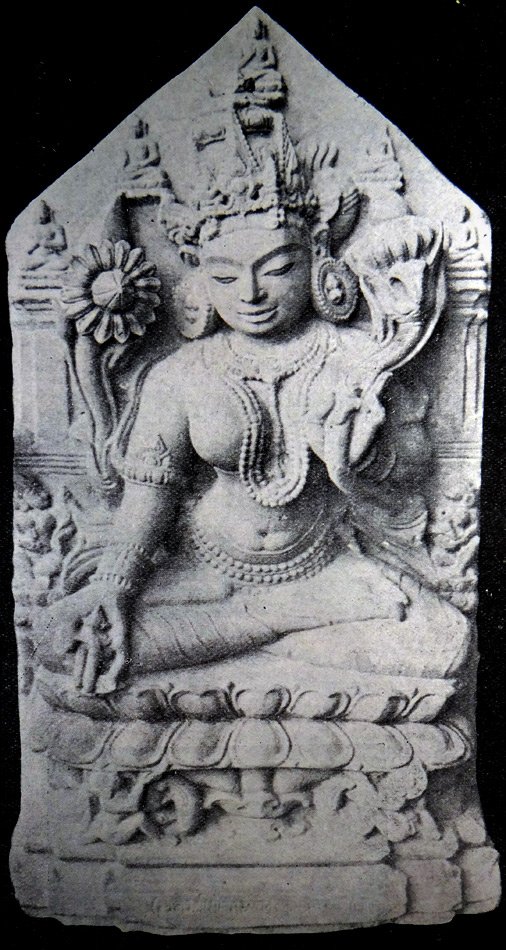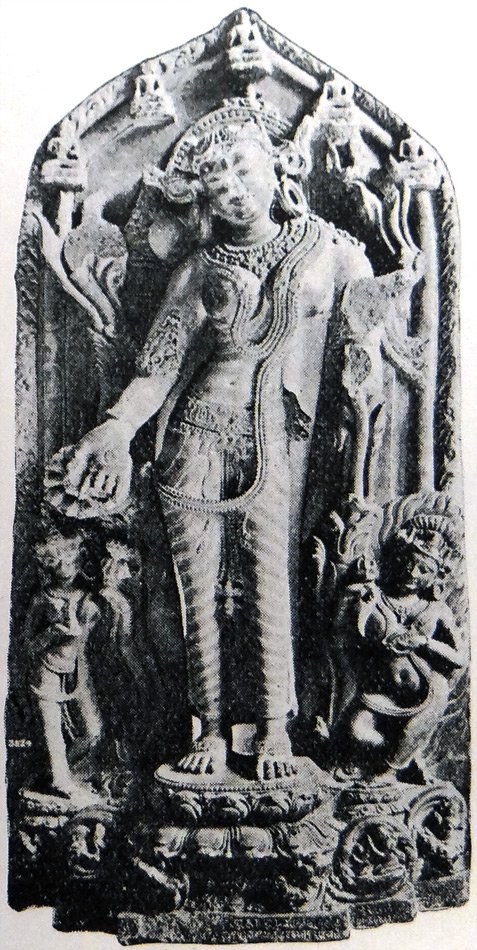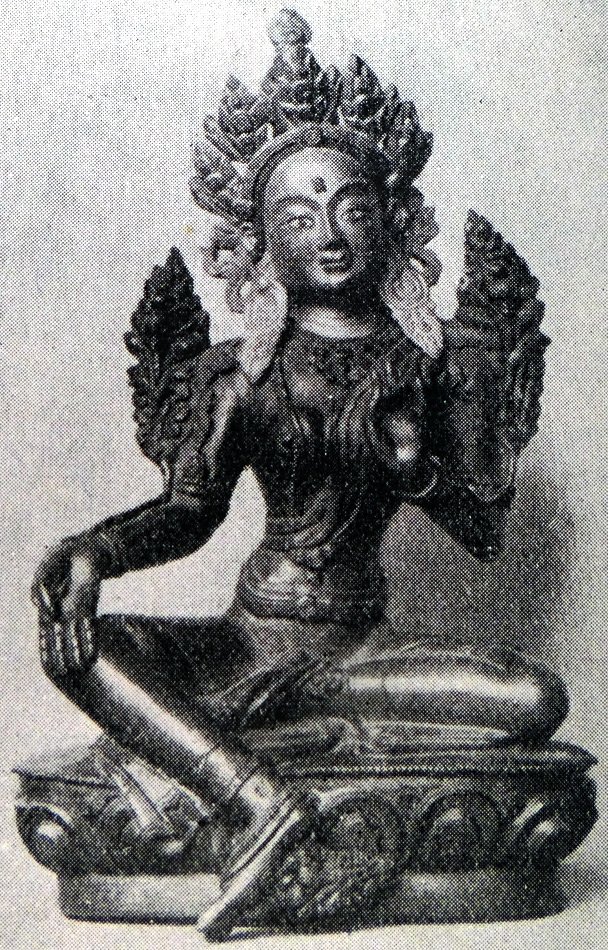The Indian Buddhist Iconography
by Benoytosh Bhattachacharyya | 1958 | 51,392 words | ISBN-10: 8173053138 | ISBN-13: 9788173053139
This page contains an iconography image of Emanations of Amoghasiddhi: Khadiravani Tara and represents figure 166-168 of the book Indian Buddhist Iconography, based on extracts of the Sadhanamala English translation. These plates and illustrations represent either photographs of sculptures or line-drawing reproductions of paintings or other representations of Buddhist artwork.
Figure 166-168 - Emanations of Amoghasiddhi: Khadiravaṇī Tārā
 Fig. 166: Khadiravaṇī Tārā (Mahoba) |
 Fig. 167: Khadiravaṇī Tārā (Indian Museum) |
 Fig. 168: Khadiravaṇī Tārā (Baroda Museum) |
Colour: green;
Mudrā: varada;
Symbol: utpala;
Companions: Aśokakāntā and Ekajaṭā.
Tārā is the common name applied to a large number of feminine deities in the Buddhist pantheon. In the Sādhanamālā, Jāṅgulī, Parṇaśabarī, Mahācīnatārā, Ekajaṭā and many others are called Tārās, including Khadiravaṇī, who is endowed with two hands, showing the Varada-mudrā in the right and the Utpala in the left. She can be recognized by the figures of the two attendant deities, Aśokakāntā Mārīcī and Ekajaṭā.
She is commonly known as Śyāmā-Tārā because of her green colour, and as the Sādhana does not mention any particular Āsana she may be represented in any attitude, either sitting (Fig. 166) or standing (Fig. 167). A beautiful statuette in the Baroda Museum shows the goddess in the Lalita attitude (Fig. 168).
Images of Khadiravaṇī Tārā are found in Tibet and China.
